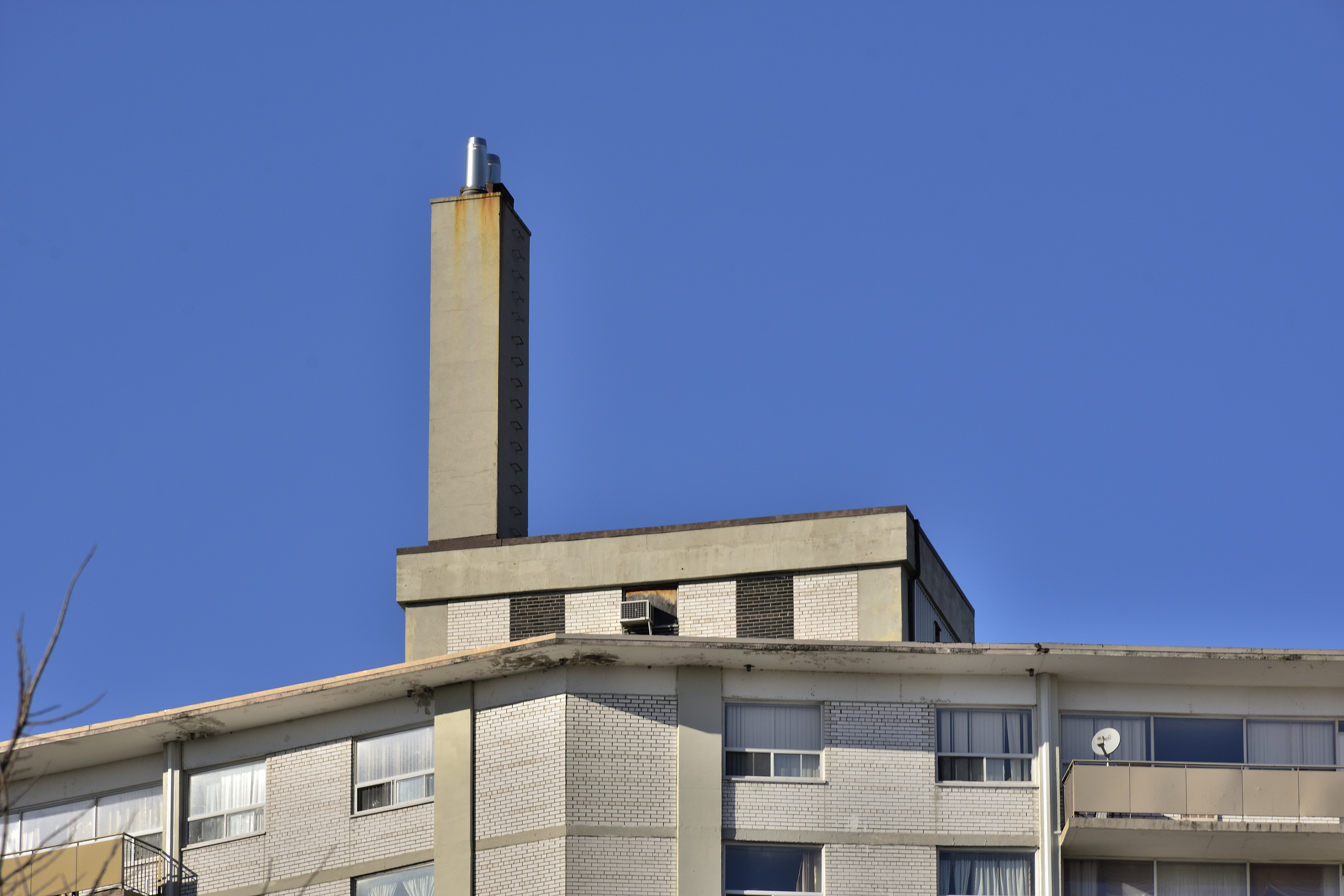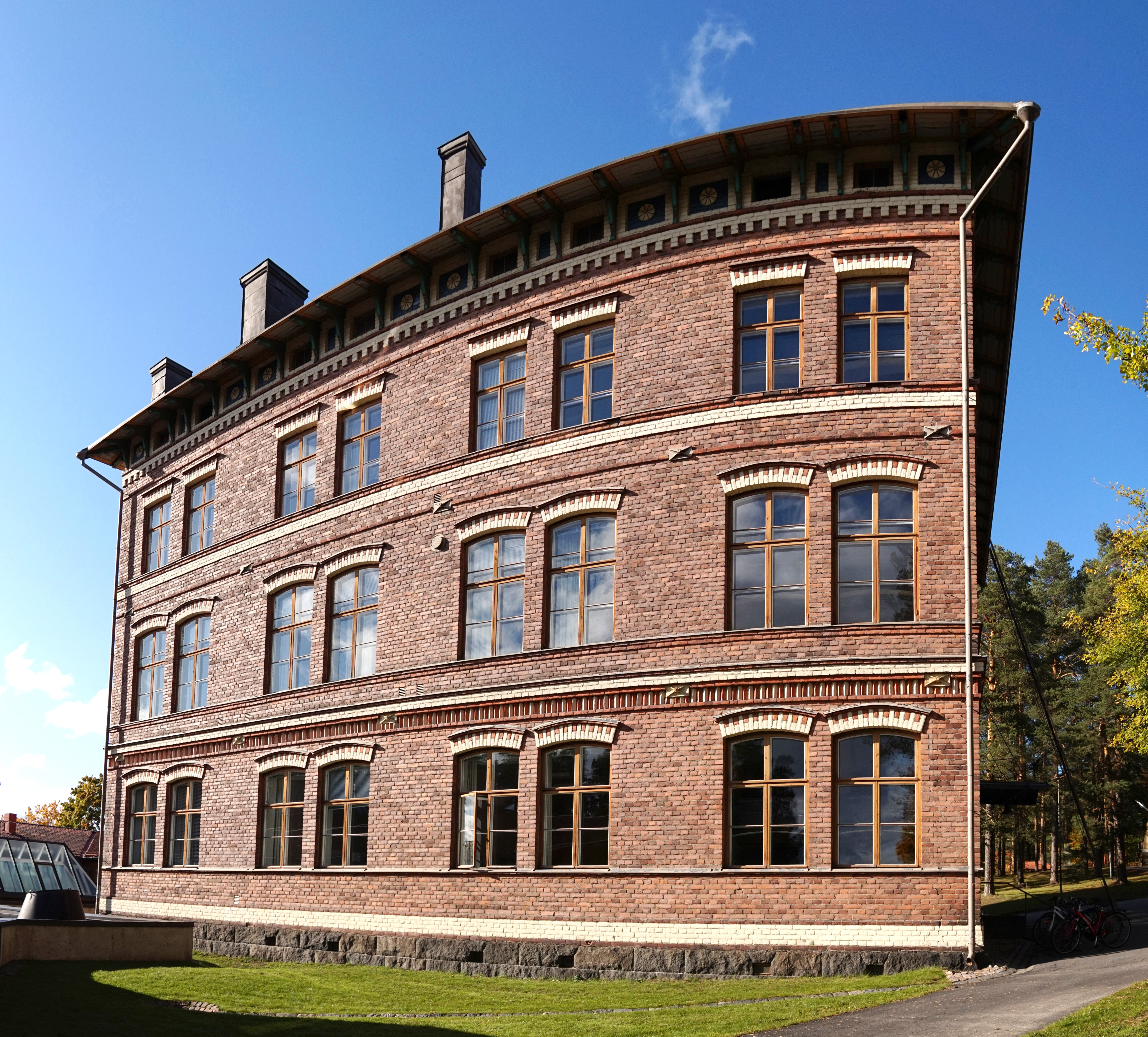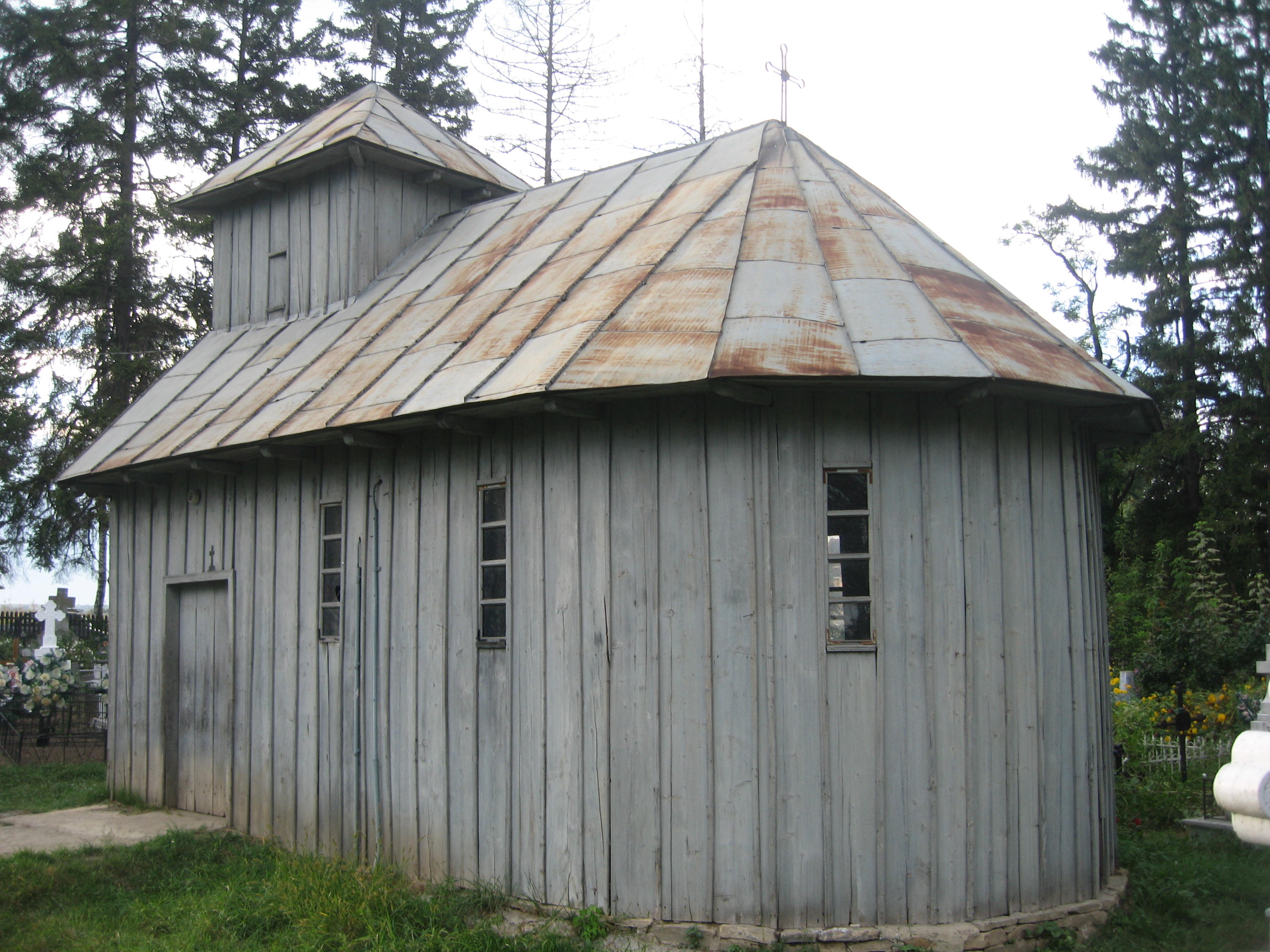|
McWhinneys Brick Cottage
McWhinneys Brick Cottage is a heritage-listed cottage at 47–55 Birley Street, Spring Hill, City of Brisbane, Queensland, Australia. It was built in the 1860s for Thomas McWhinney. It was added to the Queensland Heritage Register on 23 February 2001. History The brick cottage at 59 Birley Street, Spring Hill, was likely erected in the mid-1860s for Thomas McWhinney, plasterer. This part of Spring Hill was surveyed officially into suburban allotments in 1856, and was soon subdivided for closer residential settlement by speculative land owners. Along with Kangaroo Point and Petrie Terrace, Spring Hill was among the earliest of Brisbane's dormitory suburbs, attracting middle class residents to the high land along the ridges, and the working class to the hollows in between: Hanly's Hollow (between Wickham Terrace and Leichhardt Street), Spring Hollow (between Leichhardt Street and Gregory Terrace), and York's Hollow (to the north of Gregory Terrace - an area occupied by a nu ... [...More Info...] [...Related Items...] OR: [Wikipedia] [Google] [Baidu] |
Spring Hill, Queensland
Spring Hill is an inner northern suburb in the City of Brisbane, Queensland, Australia. In the , Spring Hill had a population of 5,974 people. Geography Spring Hill is located north of the central business district. Parts of Spring Hill can be considered to be extensions of the Brisbane CBD Brisbane City is the central suburb and central business district of Brisbane, the state capital of Queensland, Australia. It is colloquially referred to as the "Brisbane CBD" or "the city". It is located on a point on the northern bank of the .... The Inner-Northern Busway, Brisbane, Inner-Northern Busway serves the suburb via the Normanby bus stop. The suburb is home to an established gay bar called The Sportsman Hotel that has been operating for more than 30 years. History Spring Hill was originally called ''Spring Hollow'' because natural springs in the area supplemented Brisbane's early water supply from the Tank Stream and its dam. The name Spring Hill came into use when pro ... [...More Info...] [...Related Items...] OR: [Wikipedia] [Google] [Baidu] |
Brisbane City Council
Brisbane City Council (BCC) is the democratic executive local government authority for the City of Brisbane, the capital city of the state of Queensland, Australia. The largest City Council in Australia by population and area, BCC's jurisdiction includes 26 wards and 27 elected councillors covering 1338km2. BCC is overseen by the Lord Mayor of Brisbane, Adrian Schrinner, and the Council of Brisbane (all councillors of the City of Brisbane) and the Civic Cabinet (Councillors that chair one of eight standing committees within BCC). The Council's CEO is Colin Jensen, supported by EO Ainsley Gold. Strategy Brisbane City Council is guided by two core future planning documents: ''Brisbane's Future Blueprint'' (infrastructure, cultural, and capital works projects), and ''Brisbane Vision 2031'' (corporate and city planning). Council also does more frequent but smaller scale community consultations through the ''Your City Your Say'' platform. ''Brisbane Future Blueprint'' '' ... [...More Info...] [...Related Items...] OR: [Wikipedia] [Google] [Baidu] |
Fireplace
A fireplace or hearth is a structure made of brick, stone or metal designed to contain a fire. Fireplaces are used for the relaxing ambiance they create and for heating a room. Modern fireplaces vary in heat efficiency, depending on the design. Historically, they were used for heating a dwelling, cooking, and heating water for laundry and domestic uses. A fire is contained in a firebox or fire pit; a chimney or other flue allows exhaust gas to escape. A fireplace may have the following: a foundation, a hearth, a firebox, a mantel, a chimney crane (used in kitchen and laundry fireplaces), a grate, a lintel, a lintel bar, an overmantel, a damper, a smoke chamber, a throat, a flue, and a chimney filter or afterburner. On the exterior, there is often a corbelled brick crown, in which the projecting courses of brick act as a drip course to keep rainwater from running down the exterior walls. A cap, hood, or shroud serves to keep rainwater out of the exterior of the chimne ... [...More Info...] [...Related Items...] OR: [Wikipedia] [Google] [Baidu] |
Chimney
A chimney is an architectural ventilation structure made of masonry, clay or metal that isolates hot toxic exhaust gases or smoke produced by a boiler, stove, furnace, incinerator, or fireplace from human living areas. Chimneys are typically vertical, or as near as possible to vertical, to ensure that the gases flow smoothly, drawing air into the combustion in what is known as the stack, or chimney effect. The space inside a chimney is called the '' flue''. Chimneys are adjacent to large industrial refineries, fossil fuel combustion facilities or part of buildings, steam locomotives and ships. In the United States, the term '' smokestack industry'' refers to the environmental impacts of burning fossil fuels by industrial society, including the electric industry during its earliest history. The term ''smokestack'' (colloquially, ''stack'') is also used when referring to locomotive chimneys or ship chimneys, and the term ''funnel'' can also be used. The height of ... [...More Info...] [...Related Items...] OR: [Wikipedia] [Google] [Baidu] |
Veranda
A veranda or verandah is a roofed, open-air gallery or porch, attached to the outside of a building. A veranda is often partly enclosed by a railing and frequently extends across the front and sides of the structure. Although the form ''verandah'' is correct and very common, some authorities prefer the version without an "h" (the ''Concise Oxford English Dictionary'' gives the "h" version as a variant and '' The Guardian Style Guide'' says "veranda not verandah"). Australia's ''Macquarie Dictionary'' prefers ''verandah''. Architecture styles notable for verandas Australia The veranda has featured quite prominently in Australian vernacular architecture and first became widespread in colonial buildings during the 1850s. The Victorian Filigree architecture style is used by residential (particularly terraced houses in Australia and New Zealand) and commercial buildings (particularly hotels) across Australia and features decorative screens of wrought iron, cast iron "lace" ... [...More Info...] [...Related Items...] OR: [Wikipedia] [Google] [Baidu] |
Pebble-dash
Roughcast or pebbledash is a coarse plaster surface used on outside walls that consists of lime and sometimes cement mixed with sand, small gravel and often pebbles or shells. The materials are mixed into a slurry and are then thrown at the working surface with a trowel or scoop. The idea is to maintain an even spread, free from lumps, ridges or runs and without missing any background. Roughcasting incorporates the stones in the mix, whereas pebbledashing adds them on top. According to the ''Encyclopædia Britannica'' Eleventh Edition (1910–1911), roughcast had been a widespread exterior coating given to the walls of common dwellings and outbuildings, but it was then frequently employed for decorative effect on country houses, especially those built using timber framing (half timber). Variety can be obtained on the surface of the wall by small pebble A pebble is a clast of rock with a particle size of based on the Udden-Wentworth scale of sedimentology. Pebbles a ... [...More Info...] [...Related Items...] OR: [Wikipedia] [Google] [Baidu] |
Tuckpointing
Tuckpointing (also called tuck pointing or tuck-pointing) is a way of using two contrasting colours of mortar in the mortar joints of brickwork, with one colour matching the bricks themselves to give an artificial impression that very fine joints have been made. In some parts of the United States and Canada, some confusion may result as the term is often used interchangeably with ''pointing'' (to correct defects or finish off joints in newly laid masonry) and ''repointing'' (to place wet mortar into cut or raked joints to repair weathered joints in old masonry). History The tuckpointing method was developed in England in the late eighteenth century to imitate brickwork constructed using ''rubbed bricks'' (also ''rubbers'' and ''gauged bricks''), which were bricks of fine, red finish that were made slightly oversized, and after firing, were individually abraded or cut, often by hand, to a precise size. When laid with white lime mortar, a neat finish of red brick contrasting with v ... [...More Info...] [...Related Items...] OR: [Wikipedia] [Google] [Baidu] |
Rat Trap Bond
Brickwork is masonry produced by a bricklayer, using bricks and mortar. Typically, rows of bricks called ''courses'' are laid on top of one another to build up a structure such as a brick wall. Bricks may be differentiated from blocks by size. For example, in the UK a brick is defined as a unit having dimensions less than and a block is defined as a unit having one or more dimensions greater than the largest possible brick. Brick is a popular medium for constructing buildings, and examples of brickwork are found through history as far back as the Bronze Age. The fired-brick faces of the ziggurat of ancient Dur-Kurigalzu in Iraq date from around 1400 BC, and the brick buildings of ancient Mohenjo-daro in Pakistan were built around 2600 BC. Much older examples of brickwork made with dried (but not fired) bricks may be found in such ancient locations as Jericho in Palestine, Çatal Höyük in Anatolia, and Mehrgarh in Pakistan. These structures have survived from the Stone Age ... [...More Info...] [...Related Items...] OR: [Wikipedia] [Google] [Baidu] |
Flemish Bond
Brickwork is masonry produced by a bricklayer, using bricks and mortar. Typically, rows of bricks called '' courses'' are laid on top of one another to build up a structure such as a brick wall. Bricks may be differentiated from blocks by size. For example, in the UK a brick is defined as a unit having dimensions less than and a block is defined as a unit having one or more dimensions greater than the largest possible brick. Brick is a popular medium for constructing buildings, and examples of brickwork are found through history as far back as the Bronze Age. The fired-brick faces of the ziggurat of ancient Dur-Kurigalzu in Iraq date from around 1400 BC, and the brick buildings of ancient Mohenjo-daro in Pakistan were built around 2600 BC. Much older examples of brickwork made with dried (but not fired) bricks may be found in such ancient locations as Jericho in Palestine, Çatal Höyük in Anatolia, and Mehrgarh in Pakistan. These structures have survived from the Stone Age ... [...More Info...] [...Related Items...] OR: [Wikipedia] [Google] [Baidu] |
Batten
A batten is most commonly a strip of solid material, historically wood but can also be of plastic, metal, or fiberglass. Battens are variously used in construction, sailing, and other fields. In the lighting industry, battens refer to linear light fittings. In the steel industry, battens used as furring may also be referred to as "top hats", in reference to the profile of the metal. Roofing ''Roofing battens'' or ''battening'', also called ''roofing lath'', are used to provide the fixing point for roofing materials such as shingles or tiles. The spacing of the battens on the trusses or rafters depend on the type of roofing material and are applied horizontally like purlins. Battens are also used in metal roofing to secure the sheets called a ''batten-seam roof'' and are covered with a ''batten roll joint''. Some roofs may use a grid of battens in both directions, known as a ''counter-batten system'', which improves ventilation. Roofing battens are most commonly made ... [...More Info...] [...Related Items...] OR: [Wikipedia] [Google] [Baidu] |
Corrugated Iron
Corrugated galvanised iron or steel, colloquially corrugated iron (near universal), wriggly tin (taken from UK military slang), pailing (in Caribbean English), corrugated sheet metal (in North America) and occasionally abbreviated CGI is a building material composed of sheets of hot-dip galvanised mild steel, cold-rolled to produce a linear ridged pattern in them. Although it is still popularly called "iron" in the UK, the material used is actually steel (which is iron alloyed with carbon for strength, commonly 0.3% carbon), and only the surviving vintage sheets may actually be made up of 100% iron. The corrugations increase the bending strength of the sheet in the direction perpendicular to the corrugations, but not parallel to them, because the steel must be stretched to bend perpendicular to the corrugations. Normally each sheet is manufactured longer in its strong direction. CGI is lightweight and easily transported. It was and still is widely used especially in rural a ... [...More Info...] [...Related Items...] OR: [Wikipedia] [Google] [Baidu] |
Foundation (engineering)
In engineering, a foundation is the element of a structure which connects it to the ground, transferring loads from the structure to the ground. Foundations are generally considered either shallow or deep. Foundation engineering is the application of soil mechanics and rock mechanics (geotechnical engineering Geotechnical engineering is the branch of civil engineering concerned with the engineering behavior of earth materials. It uses the principles of soil mechanics and rock mechanics for the solution of its respective engineering problems. It a ...) in the design of foundation elements of structures. Purpose Foundations provide the structure's stability from the ground: * To distribute the weight of the structure over a large area in order to avoid overloading the underlying soil (possibly causing unequal settlement). * To anchor the structure against natural forces including earthquakes, floods, droughts, frost heaves, tornadoes and wind. * To provide a level su ... [...More Info...] [...Related Items...] OR: [Wikipedia] [Google] [Baidu] |






